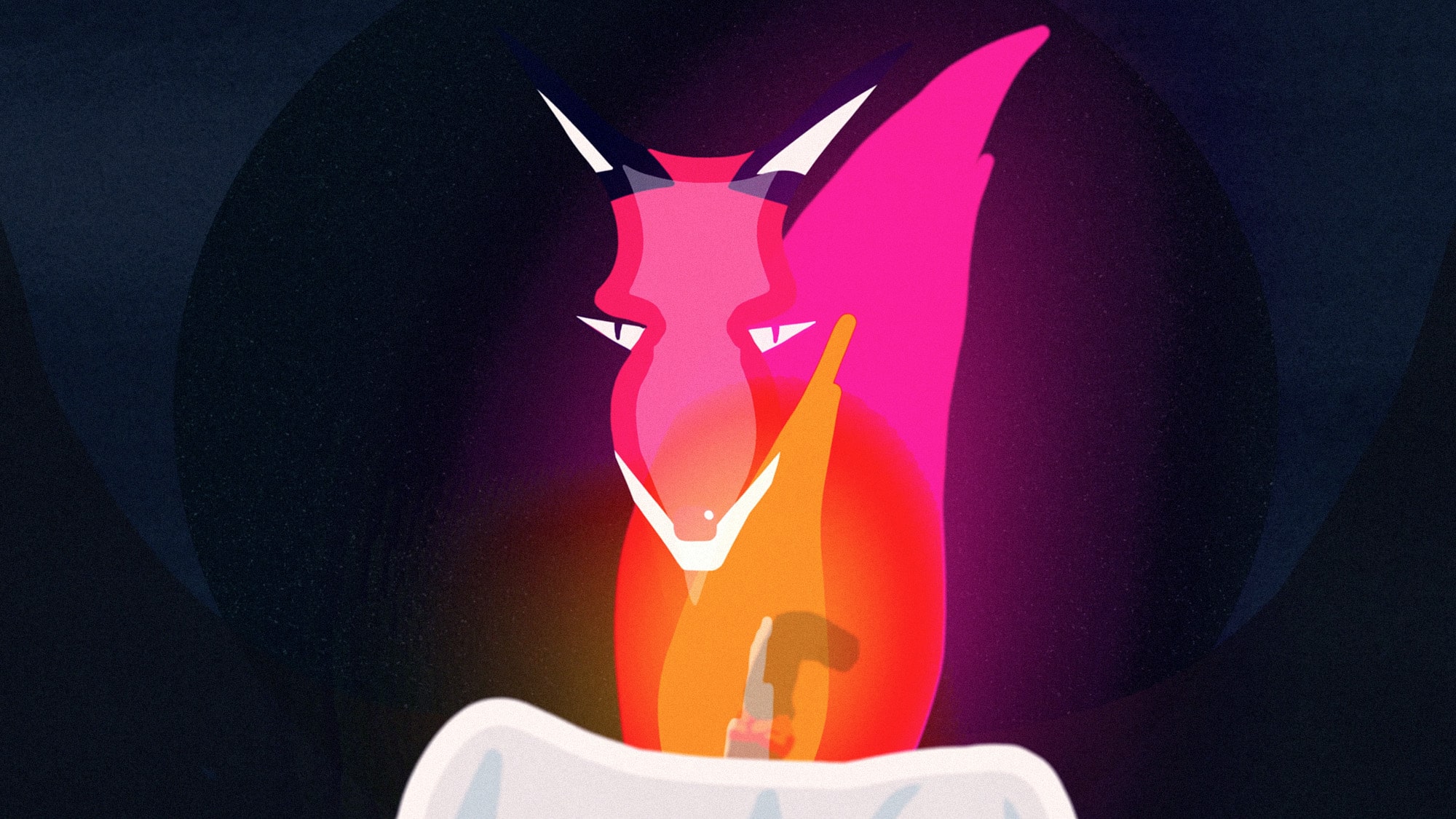
War can be immersive and all-consuming for some, but it can also be a haunting, isolating time. For every hard-fought on-the-ground battle, there are the forgotten, lonely soldiers, holding out in the world’s remotest outposts. Inspired by the stories of people who keep fighting a war that has long been finished, with Senseless, graphic designer turned filmmaker David Zamorano has created a captivating tale of one man and his talking fox holding out in a snow-covered wasteland despite seemingly no reward in the end. Utilising blocky colours, crisp images and creating a keen sense of barrenness and despair — told with a mixture of 2D and 3D animation techniques — the resultant film boasts a clear aesthetic developed from his graphic design work. Joining us today, we talked to the Chilean-born, London-based director about Eastern Bloc architecture, the meaninglessness of war and making sure that the fantasy was grounded with realistic sound design.
The film is about war and the isolation it brings to the people who participate in it. Was there any particular conflict you had in mind when you were making this film?
There were many things related to war. For example, I took this story of this Japanese soldier, Hiroo Onoda, who kept fighting after World War II was finished. But I had read a lot of stories about war, especially when humans are going through these surreal situations, and tried to put it all together in this story. There were some things that caught my attention and started repeating through different stories. For example, the relations between humans and animals. I remember a story about very old soldiers talking about how they asked their horses to make decisions on whether to keep fighting.
I always think about the army; you follow a country and a flag which are abstract things that don’t exist.
Sometimes we still see in the news, small guerrilla wars, people fighting against big countries or more than one army. It was also something that happened in the 70s in Chile where we had these left-wing guerrillas fighting the government. So this was also working in this “senseless” world. All the things that caught my attention in these stories, I tried to put in Senseless.

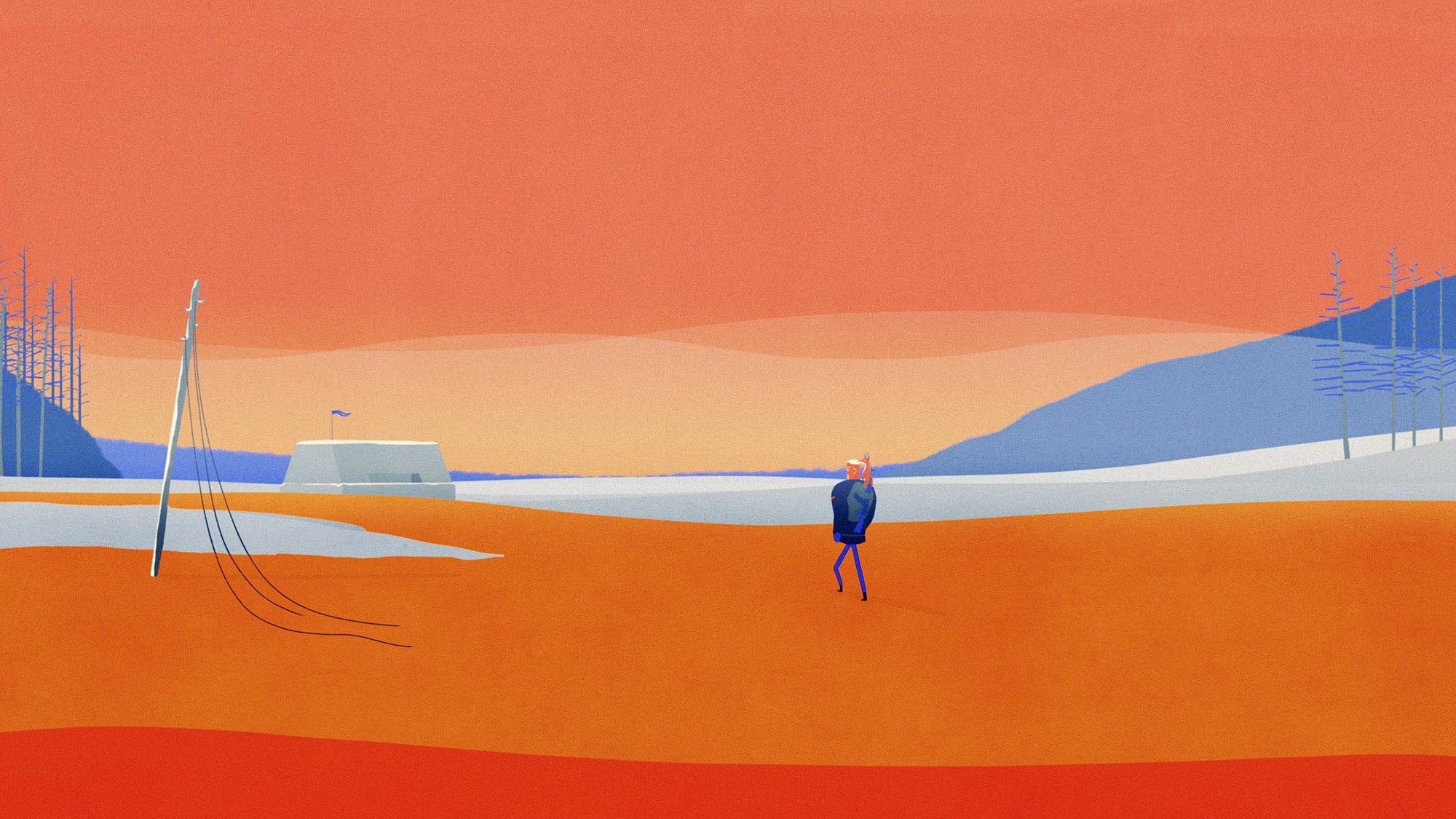
And what makes you so drawn to the subject in general?
I have always been interested in war. Not as in the fighting and everything, but what’s behind that has always caught my attention. What brings humans to these situations? I always think about the army; you follow a country and a flag which are abstract things that don’t exist. People are humans, they make decisions and say, “this is our flag, this is our territory”, but it doesn’t exist. In the end, you don’t make so many decisions in life. Sometimes you just follow your family or country or culture. But there are people who bring that to the extreme and keep believing that and keep fighting for it. I thought that war, in those last days for example, when you have lost everything and you’re only fighting for your beliefs, was something very interesting that I wanted to show in Senseless.
I remember a story about very old soldiers talking about how they asked their horses to make decisions on whether to keep fighting.
From the shape of the rifle to the look of the bunker and the snow, I got a bit of a Siberian/Soviet feel. Was this an influence at all?
Definitely. I think that’s my graphic design side. I have always been very interested in Brutalist architecture and reading about Cold War history. I keep going back to stories that happened in Eastern Europe. I thought all those landscapes worked very well. That’s why the characters and everything that I illustrated was influenced by these blocky architecture and colours.
When I came here to Europe, I visited some bunkers in Bulgaria. These communist, very strange things like a spaceship on top of a mountain. It’s very senseless: they were making this huge building on top of a mountain, saying “we are the kings of the world”. I think it lasted only five years because then the Berlin Wall fell.
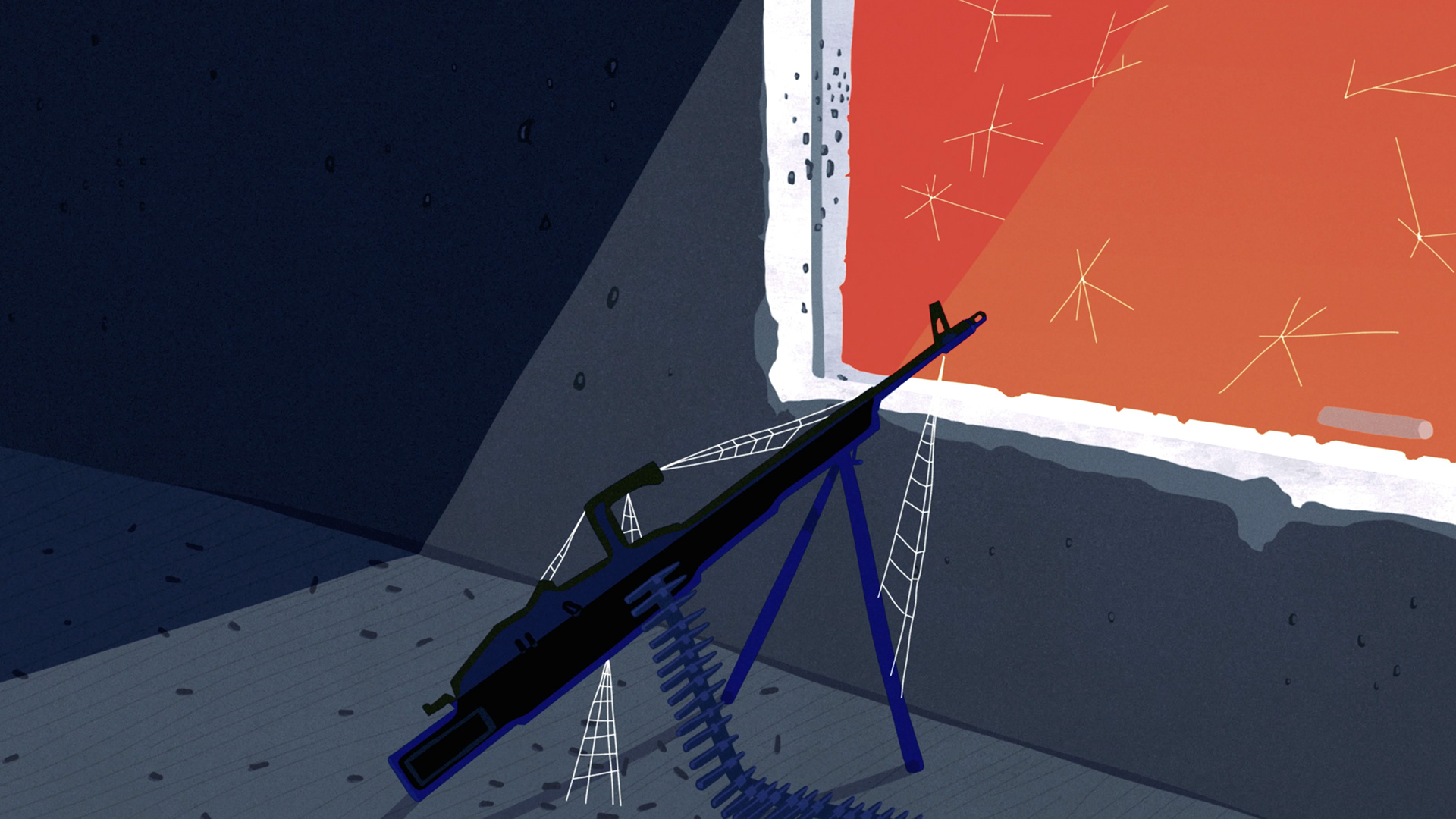

Where did this fascination come from initially?
I was thinking about where all this stuff came from. When I was little, I really liked collecting stamps. I used to collect stamps from the GDR. As a graphic designer I think that was a starting point. I still collect stamps today. I think there’s a connection between Bauhaus and my design. Personally, I like these simple designs; very blocky and geometric.
When I was doing research for the bunkers and everything, sometimes I found posters of the era. I played with the colours a little — orange, blue — but I tried to keep a very simple art direction and design. I was also watching movies from directors from the Eastern bloc, for example, Stalker by Tarkovsky. Here I tried to make the island of Senseless the most important character in the film. A place that speaks for itself and has this history behind it.
The other director that plays an important part in the story is Jodorowsky. There is a scene in one of his movies, where he says: all your idols and all of the people that you have been following, make a picture of them and then burn them. Burn everything that stops you from making things and being free.
I have always been very interested in Brutalist architecture and reading about Cold War history.
But while Jodorowsky can overwhelm you with images, you have some very clear and striking ones here. Do you have the image first or the story?
I think the image starts first. I think it’s because I’m a graphic designer. I have to read about making scripts and everything because this is my first short film. I think it was landscapes; there were some places and black-and-white photographs from war history and everything. That was in my mind and then I tried to put them together in this story. I’m not sure if it was Tarkovsky or Kieślowski who said: making a film is like watching the window from the train and you’re making your own story from the landscape. That’s the way I tried to put this together.
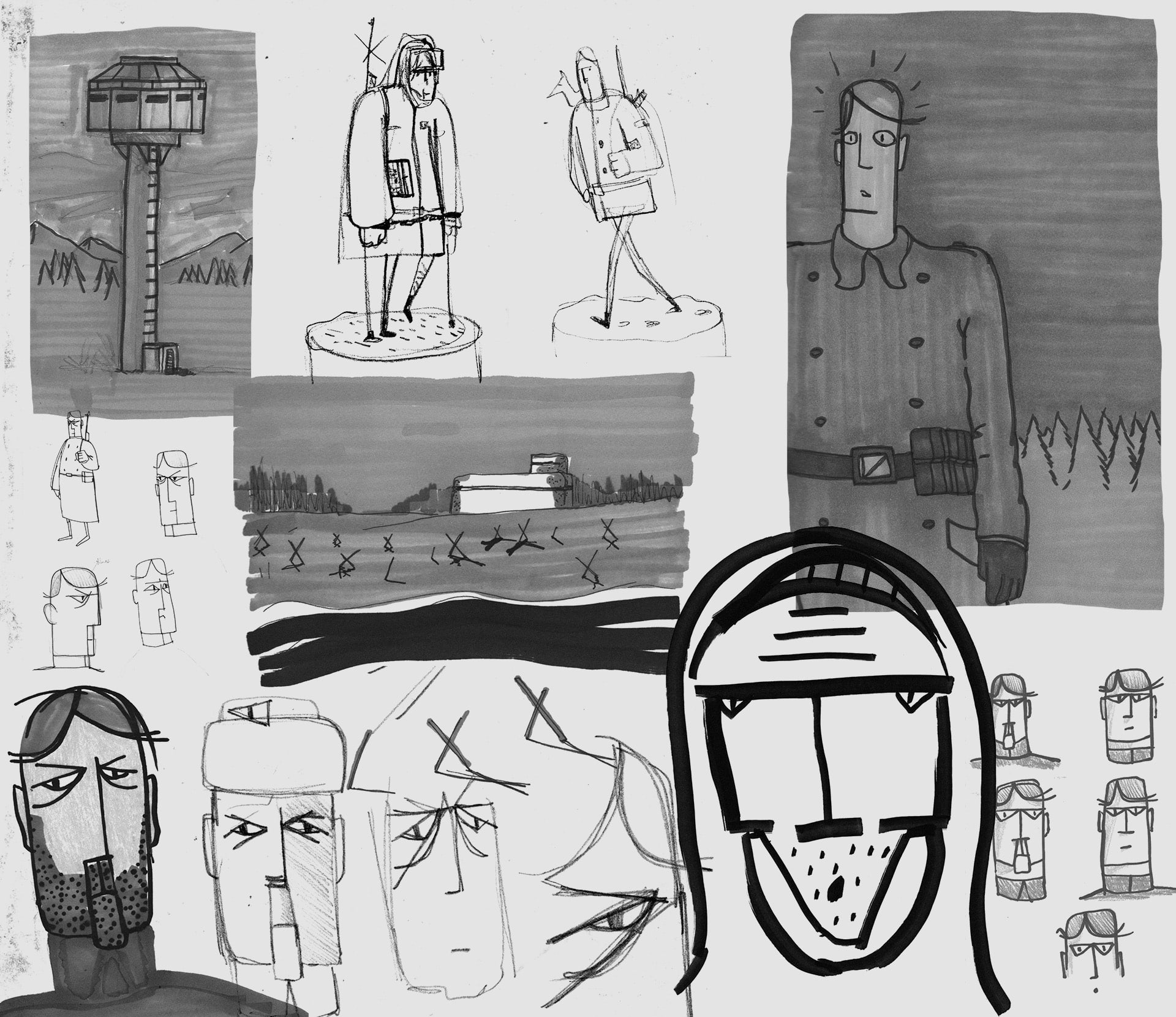
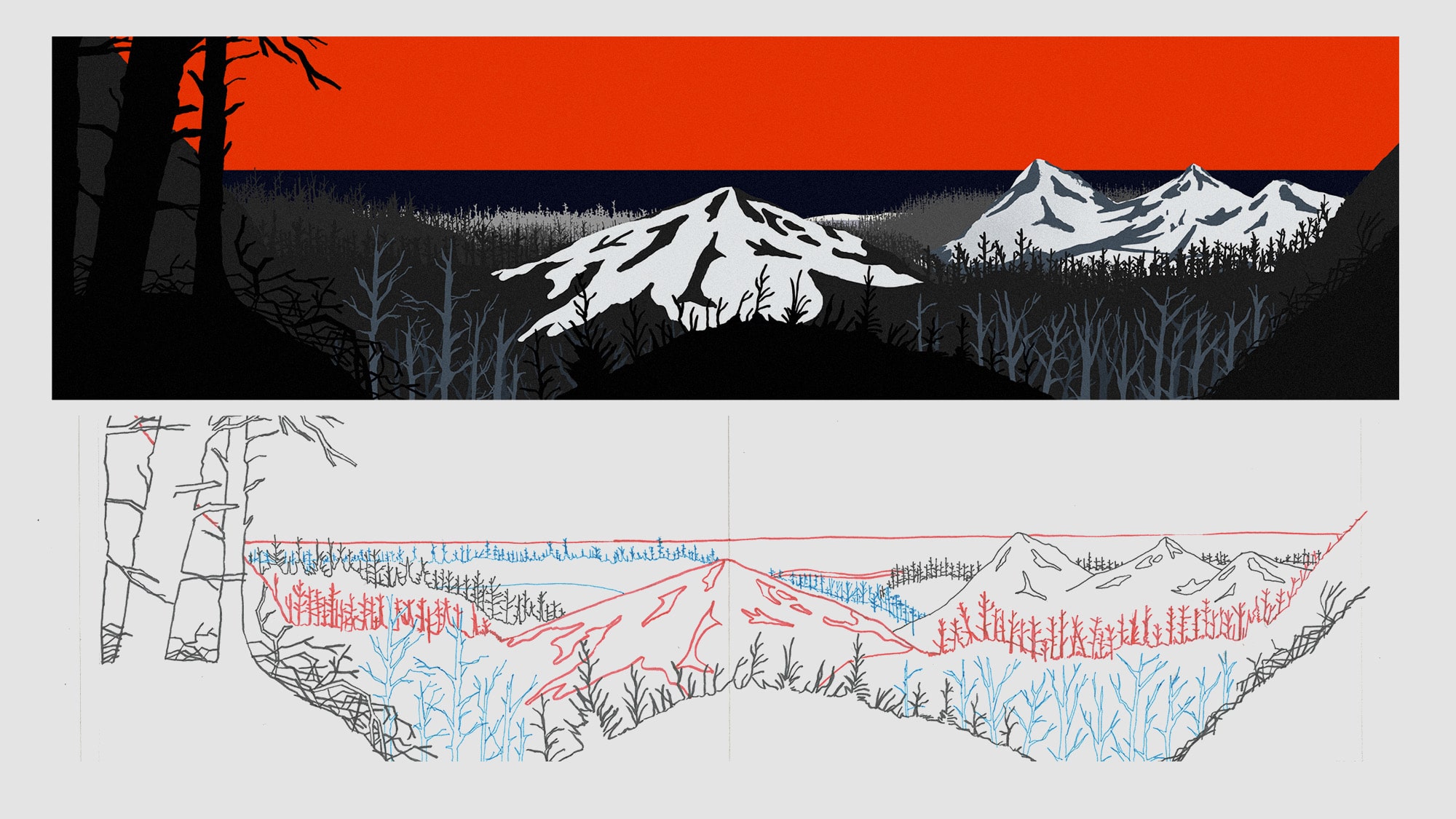
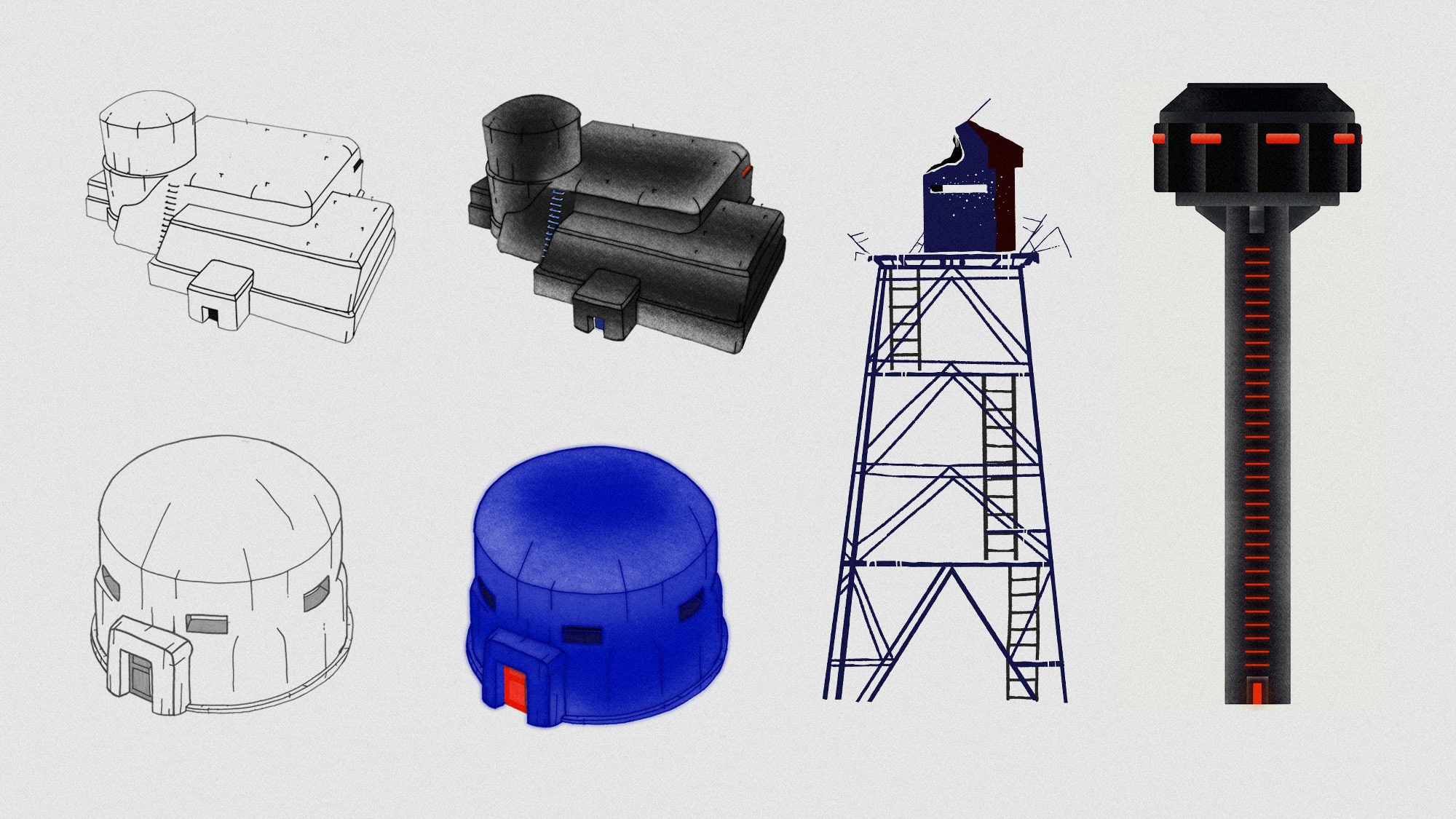

There is a combination of 2D and 3D here. I’d love to know how you put the story together in the animation process?
I made a first version where everything was animated by hand and scanned. But then in the second version when I cleaned the story, I made it in Photoshop, basically frame-by-frame, with only a few frames to make movements. It was very blocky, maybe the fox was the only character where I worked more on his movement. I made these bunkers in Cinema 4D, a 3D program, then when I decided which scenes would be in this bunker, I drew it again. That was all, with the more technical parts in After Effects. I also added the mood with the clouds and fog there.
I tried to make the island of Senseless the most important character in the film.
When the leaflets fall out of the plane, the sound design is really crisp and nice. How did you work with the sound designer on this?
That was Wolf Beucher. He’s German, living in Austria. We talked together and understood everything we have been talking about. I said to him that this story is kind of a drama, but my drawings are a little more cartoonish, with light colours, but not real, so the sound effects have to be really real. It is the connection with truth. There was a truth about this story so I wanted it to be really loyal to the sounds. He found real noises — like it’s a real airplane sound there.

What are you working on next?
Right now, I’m working on a story in Chile, during the Pinochet dictatorship. It’s about spies and double agents. It’s a story that happened in the early 80s that I’ve been reading about for a couple of years. What caught my attention is that it has never been resolved because it happened inside the secret police of Pinochet. It’s like the Mafia. It’s a difficult one because it’s a difficult story and these are cruel, tough agents who torture people and everything. That’s what I’m working on now, doing my research here in Chile in the library. I will do it in animation again, but maybe with a team this time.


